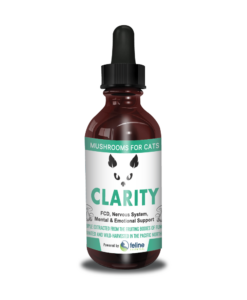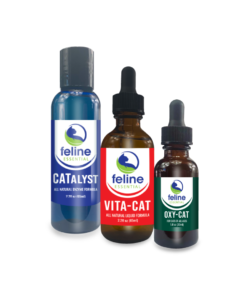Should You Be Worried About Bird Flu and Your Cat’s Raw Diet?
If you feed your cat a species-appropriate raw diet and have been keeping up with recent news, you may be feeling a bit uneasy. Sensational headlines and social media panic have cat parents questioning whether raw feeding is safe after reports surfaced about a house cat in Oregon allegedly contracting the H5N1 virus—better known as bird flu—from eating raw food. Even some veterinarians have joined the fear-driven narrative, adding to the growing anxiety among pet parents.
But should you really be worried? Let’s talk facts, not fear.
The Oregon Cat and H5N1: What Really Happened?
The Oregon Department of Agriculture (ODA) reported that a strictly indoor cat had contracted bird flu, with the implication that raw food was the culprit. However, their own records contradict this claim. The cat in question took leash walks, meaning it had potential exposure to wild waterfowl—birds that are the primary carriers of H5N1. This is a critical detail that was omitted in the initial press release, leading many to draw premature conclusions about the safety of raw diets.
Bird flu is primarily spread through migratory birds. Every documented case of feline infections prior to this—including barn cats and big cats—has involved outdoor exposure to infected birds or their droppings, not commercially prepared raw food.
The Testing Process: A Major Red Flag
Another alarming issue is how authorities tested the raw food allegedly linked to the infection. Established regulatory protocols require testing of a sealed package to avoid contamination or tampering. However, in this case, FDA officials tested an open bag of cat food—something that violates their own standards. This major oversight raises serious questions about the credibility of their findings.
Should You Stop Feeding Raw?
The fear-mongering surrounding this case has led some cat parents to reconsider raw feeding, but it’s important to look at the bigger picture. H5N1 has existed since the 1800s, with this particular strain emerging in 1996. While it is a legitimate concern, there is currently no definitive proof that raw food caused the Oregon cat’s infection.
If your cat is exclusively indoors and has no contact with wild birds, the risk is minimal. However, if you are feeling uneasy, there’s a simple solution: cook your cat’s poultry and eggs to 165 degrees Fahrenheit for a few minutes before feeding. This ensures any potential pathogens are eliminated while still providing the nutritional benefits of fresh, minimally processed food.
The Bottom Line: Stay Informed, Not Fearful
Misinformation spreads faster than viruses, and fear-based narratives can lead cat parents to make unnecessary changes to their cats’ diets. The best course of action? Do your own research. Review public records, analyze the data, and make an informed decision based on facts—not headlines designed to spark panic.
A species-appropriate raw diet remains one of the most nutritionally beneficial ways to feed your cat. While staying aware of potential risks is important, allowing fear to dictate cat care decisions can often do more harm than good. Trust the science, stay informed, and, if needed, adjust feeding practices in a way that maintains both safety and optimal nutrition for your feline friend.




Recent Comments